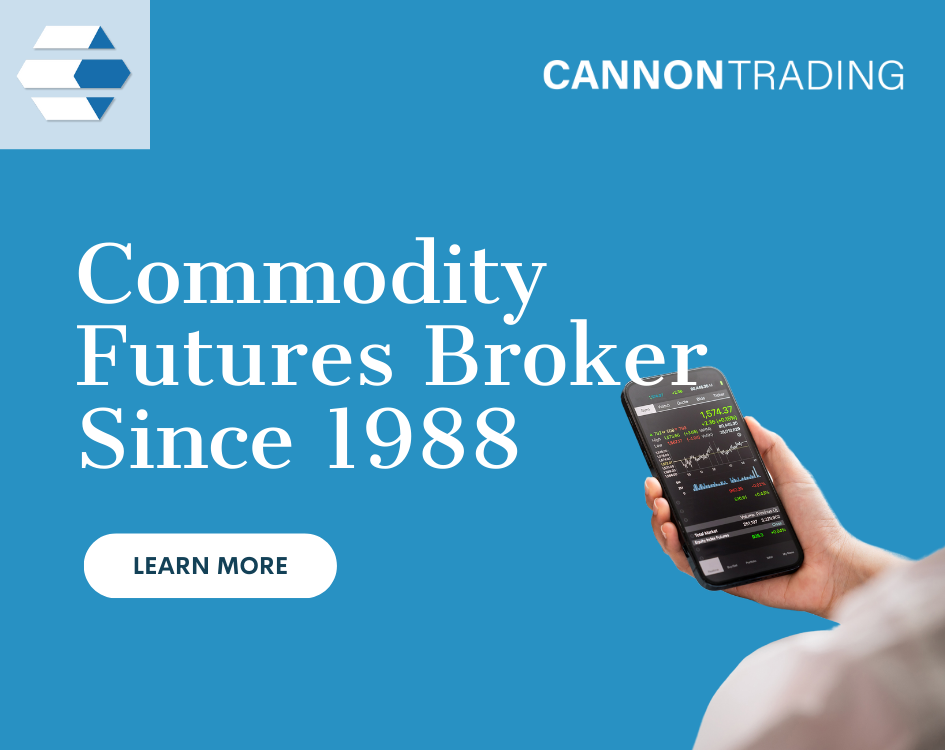
FOMC Minutes, NVIDIA

By John Thorpe, Senior Broker
|
||||||||||||||||||||||||||||||||||||||||||||||||||||||||||||||
|
||||||||||||||||||||||||||||||||||||||||||||||||||||||||||||||
|
Trading guide, as you can understand from the term, is a compilation of tips and tricks that can help you in trading. Whether you are new to the world of trading or are an expert in it, a trading guide is a very useful document.
Moreover, every trading guide has a specific purpose. So, if you are thinking about trading, a trade guide will serve you like a self-help manual. So, whether it is about trading options, metals, grains or any other futures contract– a trading guide has all the information in it.
You don’t need to buy one, for you will able to find a number of them online. We at Cannon Trading help you make the most of your trading ventures. Therefore, we have compiled some of the best trading guides for you to learn from. Listed under this category archive are some trade guides using which you can use to help you succeed in many trading ventures. There is enough information in these guides that can help you master the art of trading futures and options smartly.


|
||||||||||||||||||||||||||||||||||||||||||||||||||||||||||||||
|
||||||||||||||||||||||||||||||||||||||||||||||||||||||||||||||
|
In the fast-moving world of futures and commodities, choosing the right futures trading platform is essential. Among the top contenders is the Futures Trading Platform CQG, widely recognized for delivering robust tools, reliable data, and seamless connectivity to global markets. As a premier online futures trading platform, CQG supports both institutional and retail traders through its diverse suite of products including CQG Spreader, CQG ONE, CQG Desktop, CQG Trader, and CQG Mobile. This guide explores the full range of offerings within the CQG ecosystem and how you can leverage them, especially through trusted brokers like Cannon Trading.
At its foundation, CQG (Commodity Quote Graphics) is a sophisticated technology provider—not a brokerage—that delivers high-speed market access and trade execution. It offers the infrastructure upon which many brokers build their futures trading platform services. With over four decades of experience, CQG is known for its accuracy, speed, and comprehensive CQG data feed. Whether you’re trading on CQG Desktop, CQG Trader, or CQG Mobile, you’re backed by a platform engineered for low-latency and high-performance trading.
The flagship interface of the platform suite is CQG Desktop, an HTML5-powered tool accessible via modern web browsers. Traders often search for CQG desktop download, but in most cases, no software installation is needed. This cloud-based interface brings together advanced charting, analytics, and execution features in one accessible solution. Traders value it for its:
A CQG desktop demo is the perfect introduction for new users, allowing for exploration of the platform in a simulated trading environment. With a focus on accessibility, CQG Desktop is ideal for both active traders and analysts seeking a professional-grade futures trading platform.
For those who prioritize order entry and execution speed over technical analysis, CQG Trader is the go-to choice. This lightweight yet powerful tool is designed with simplicity and precision in mind. Features include:
Though it lacks the comprehensive charting tools found in CQG Desktop, CQG Trader is a streamlined alternative for traders who already use external charting or want a dedicated execution interface. As part of the cqg trading suite, it remains a reliable and high-speed solution for professional use.
In today’s mobile-first world, CQG Mobile ensures traders are never out of touch with the markets. Available for iOS and Android, CQG Mobile provides:
CQG Mobile enables traders to take the full power of their futures trading platform with them. Whether you’re traveling, commuting, or working remotely, cqg mobile keeps you connected.
For those new to the ecosystem or considering switching from another online futures trading platform, the CQG desktop demo offers a no-risk environment to explore the platform. This simulated version replicates live market conditions using real-time data, but with virtual capital.
Key benefits include:
Most brokers, including Cannon Trading, offer access to the CQG desktop demo via a quick sign-up and CQG desktop download link or web-based portal. The platform is easy to get started with and doesn’t require extensive technical skills.
At the heart of every CQG product lies the high-performance CQG data feed. Known for its accuracy and reliability, it powers the full suite of platforms and offers:
Professional traders know that trading is only as good as the data behind it. The CQG data feed delivers the insight and speed needed to succeed.
Managing multiple platforms is simple with a single CQG login. Whether you’re on CQG Desktop, CQG Trader, or CQG Mobile, your credentials carry over. This unified access:
Most brokers support only one live session at a time per exchange rule, but switching between devices is quick and hassle-free.
While traditional platforms often require hefty installations, CQG Desktop redefines ease of access. Despite the popular term “CQG desktop download,” most users simply access the platform via a browser.
For those who prefer desktop apps, light CQG desktop download versions or launchers are available. Mobile users can install CQG Mobile via app stores and begin trading immediately with their CQG login.


Brokers make a major difference in how effective a platform is. Cannon Trading stands out as a leading choice for accessing CQG Desktop, CQG Trader, or CQG Mobile.
Whether you’re just starting or are a seasoned trader, Cannon Trading combines the power of CQG with reliable, personalized brokerage service.
From the fully featured CQG Desktop to the streamlined CQG Trader and flexible CQG Mobile, the CQG Futures Trading Platform provides traders with everything they need to thrive. With consistent and accurate market data through the CQG data feed, a seamless CQG login experience, and accessibility across devices, CQG is built for modern trading.
Starting is easy—just request a CQG desktop demo from a broker like Cannon Trading, complete your quick CQG desktop download, and enter the market with confidence. For those serious about trading, partnering with Cannon Trading brings added benefits—top-tier support, a broad platform offering, and decades of futures market expertise.
When reliability, flexibility, and data quality matter, CQG, combined with Cannon Trading, provides the ideal environment for success in futures markets.
Ready to start trading futures? Call us at 1(800)454-9572 (US) or (310)859-9572 (International), or email info@cannontrading.com to speak with one of our experienced, Series-3 licensed futures brokers and begin your futures trading journey with Cannon Trading Company today.
Disclaimer: Trading Futures, Options on Futures, and retail off-exchange foreign currency transactions involve substantial risk of loss and are not suitable for all investors. Past performance is not indicative of future results. Carefully consider if trading is suitable for you in light of your circumstances, knowledge, and financial resources. You may lose all or more of your initial investment. Opinions, market data, and recommendations are subject to change at any time.
Important: Trading commodity futures and options involves a substantial risk of loss. The recommendations contained in this article are opinions only and do not guarantee any profits. This article is for educational purposes. Past performances are not necessarily indicative of future results.
This article has been generated with the help of AI Technology and modified for accuracy and compliance.
Follow us on all socials: @cannontrading
In today’s fast-paced financial markets, choosing the right futures trading platform can significantly influence trading outcomes. Bookmap stands out as a sophisticated platform that redefines how traders visualize and interpret market activity. With its unique graphical interface and real-time data analytics, Bookmap trading brings a new level of insight to order flow and liquidity, providing users with actionable market intelligence.
As technology transforms online trading, it’s crucial to work with a seasoned brokerage firm that offers both robust technology and dedicated support. That’s where Cannon Trading Company becomes essential. With a legacy of excellence and innovation in the online futures trading Brokerage industry, Cannon Trading helps traders leverage advanced tools like Bookmap for maximum performance.
This guide covers the highlights of Bookmap trading, outlines Bookmap pricing and Bookmap download steps, and explains how Cannon Trading can be your trusted ally in futures markets.
Bookmap is a trailblazing futures trading platform that allows market participants to visualize full-depth order book activity in real time. Unlike standard charting software, Bookmap trading uncovers hidden layers of market data through its heatmap and volume tracking tools.
Users can access the platform via Bookmap Web or integrate it with Bookmap TradingView, offering multi-device convenience and compatibility. Bookmap free versions offer a hands-on preview, ideal for users evaluating its capabilities before subscribing.
A key strength of the platform lies in Bookmap data. Traders can analyze historical order books alongside real-time trade flows to uncover emerging trends and key market turning points—features that elevate this tool above traditional trading platforms.
Understanding Bookmap pricing helps traders select the plan that best suits their trading objectives:
All subscription levels support simple Bookmap download options for Windows and Mac users. Whether you’re just starting or already managing large positions, there’s a plan to meet your needs.
Ready to begin with Bookmap? Here’s how to initiate the Bookmap download and jump into trading:
The availability of Bookmap Web means you can even monitor positions and conduct trades from a mobile browser or any internet-connected device.


When it comes to futures trading, your broker matters as much as your platform. Cannon Trading excels in helping clients navigate and optimize online futures trading platforms—including Bookmap.
Merging Bookmap’s technical sophistication with Cannon Trading’s client-focused services produces a winning combination for any trader. With Cannon’s infrastructure and Bookmap’s tools, market transparency can potentially become a competitive advantage.
Whether it’s helping you analyze Bookmap pricing, managing Bookmap data integrations, or facilitating the Bookmap download process, Cannon ensures a smooth and efficient experience every step of the way.
Bookmap is more than just a futures trading platform—it’s a revolutionary tool that offers traders a unique edge through order flow visibility and granular market insight. With tools like Bookmap TradingView and browser-friendly Bookmap Web access, it fits perfectly into the modern trader’s workflow. Add in the robust Bookmap free edition and flexible pricing plans, and the platform becomes accessible to everyone from beginners to seasoned pros.
When you team up with a broker like Cannon Trading, you gain more than platform access—you gain a knowledgeable ally in your trading journey. Their commitment to excellence in online futures trading platforms, including Bookmap, positions them as the broker of choice for traders seeking both innovation and support.
Whether you’re evaluating Bookmap pricing or just beginning with a Bookmap download, Cannon Trading is the ideal partner to help you master Bookmap trading and elevate your results.
Ready to start trading futures? Call us at 1(800)454-9572 (US) or (310)859-9572 (International), or email info@cannontrading.com to speak with one of our experienced, Series-3 licensed futures brokers and begin your futures trading journey with Cannon Trading Company today.
Disclaimer: Trading Futures, Options on Futures, and retail off-exchange foreign currency transactions involve substantial risk of loss and are not suitable for all investors. Past performance is not indicative of future results. Carefully consider if trading is suitable for you in light of your circumstances, knowledge, and financial resources. You may lose all or more of your initial investment. Opinions, market data, and recommendations are subject to change at any time.
Important: Trading commodity futures and options involves a substantial risk of loss. The recommendations contained in this article are opinions only and do not guarantee any profits. This article is for educational purposes. Past performances are not necessarily indicative of future results.
This article has been generated with the help of AI Technology and modified for accuracy and compliance.
Follow us on all socials: @cannontrading
In today’s fast-evolving landscape of futures trading, choosing the right online futures trading platform can significantly impact your success. One platform making waves among traders—both seasoned and novice—is the MotiveWave Futures Trading Platform. Known for its depth, versatility, and user-centric design, MotiveWave trading offers everything from cutting-edge charting tools to seamless mobile integration.
This comprehensive MotiveWave review explores the platform’s core features, pricing, usability, and how it pairs perfectly with Cannon Trading Company to deliver an unparalleled futures trading platform experience.
MotiveWave is a high-performance futures trading platform designed to cater to both manual and algorithmic traders. Initially popular among forex and equity markets, it has gained significant traction as an online futures trading platform. Its strength lies in its sophisticated tools and customizable interface, making it suitable for retail traders and institutional users alike.
From MotiveWave mobile access for on-the-go trading to advanced desktop functions via MotiveWave download, the software adapts to various trading styles. Add in Java-based scripting, modular add-ons, and high compatibility with brokers, and it’s clear why this is a leading platform in today’s markets.
This makes MotiveWave trading ideal for users who rely heavily on technical analysis. Whether you’re backtesting historical data or analyzing real-time markets, the software’s visual interface gives a clear edge.
This feature empowers users to transition from manual to automated trading seamlessly—making it one of the standout capabilities in any MotiveWave review.
For traders seeking a flexible futures trading platform, this level of integration is essential.
The MotiveWave price structure is designed to grow with the user—from beginner-level access to robust institutional-grade packages.
Whether you’re using MotiveWave mobile or desktop, this feature supports proactive decision-making.
This convenience is a major highlight in any thorough MotiveWave review.
For frequent users, especially those who run several strategies at once, this can be a game-changer.
Getting started is simple. The MotiveWave login process includes secure, two-factor authentication and customizable dashboards. Once logged in, traders can tailor the layout to suit their trading style.
The MotiveWave download is available on the official website and supports Windows, macOS, and Linux. Updates are frequent, ensuring compatibility and security.
A common beginner question is: Is MotiveWave free? While there’s no fully free version, the platform offers a generous trial to explore its core features. Once the trial ends, pricing tiers become available.
However, with features such as strategy automation, integrated market data, and custom analytics, the MotiveWave price reflects its value. Cannon Trading occasionally provides special offers or extended trials, adding to its appeal.

Cannon Trading Company is more than just a broker—it’s a long-established industry leader that complements MotiveWave trading with unmatched support and guidance. Here’s how:
User feedback consistently reinforces a positive MotiveWave review. Traders point to its robust charting, customization, and real-time data access as defining strengths. Both manual and automated traders find value in its design.
Many highlight how MotiveWave trading simplifies complex strategies while offering powerful tools under the hood. Add MotiveWave mobile to the mix, and it’s a platform that fits every lifestyle.
Cannon Trading’s support team is often mentioned in tandem with the MotiveWave review experience, especially for helping new users navigate setup, MotiveWave login, and ongoing optimization.
The MotiveWave Futures Trading Platform stands out in the crowded landscape of online futures trading platform options. From customizable workspaces to algorithmic execution and mobile access, its versatility is hard to beat.
The platform delivers performance where it counts, backed by cutting-edge tools and support.
Combined with Cannon Trading’s decades of experience, you’re not just getting software—you’re getting a trading partner.
For anyone serious about stepping up their game in the futures markets, MotiveWave—especially when paired with Cannon Trading—is a great decision.
Ready to start trading futures? Call us at 1(800)454-9572 (US) or (310)859-9572 (International), or email info@cannontrading.com to speak with one of our experienced, Series-3 licensed futures brokers and begin your futures trading journey with Cannon Trading Company today.
Disclaimer: Trading Futures, Options on Futures, and retail off-exchange foreign currency transactions involve substantial risk of loss and are not suitable for all investors. Past performance is not indicative of future results. Carefully consider if trading is suitable for you in light of your circumstances, knowledge, and financial resources. You may lose all or more of your initial investment. Opinions, market data, and recommendations are subject to change at any time.
Important: Trading commodity futures and options involves a substantial risk of loss. The recommendations contained in this article are opinions only and do not guarantee any profits. This article is for educational purposes. Past performances are not necessarily indicative of future results.
This article has been generated with the help of AI Technology and modified for accuracy and compliance.
Follow us on all socials: @cannontrading

|
||||||||||||||||||||||||||||||||||||||||||||||||||||||||||
|
||||||||||||||||||||||||||||||||||||||||||||||||||||||||||
|
Futures trading has undergone a major transformation with the emergence of modern, intuitive platforms offering comprehensive analytical capabilities. Among them, the TradingView Futures Trading Platform has rapidly become a favorite among both retail and institutional traders. With its real-time charting tools, global market access, and flexible deployment through desktop and mobile applications, TradingView brings together technology, analysis, and “Seamless” trading in one package.
Cannon Trading Company is a trusted name in the futures trading industry for over three decades. We offer this platform along with other platforms on our website. By combining TradingView’s powerful features with Cannon Trading’s seasoned expertise, traders can enjoy a high-performance online futures trading platform designed to optimize strategy execution and support long-term success.
The TradingView Futures Trading Platform is a cloud-based and cross-device compatible solution designed to enhance the way futures traders interact with markets. Offered as a TradingView download, TradingView app, or TradingView Desktop program, it ensures accessibility from virtually any device. Whether you’re at your desk or trading on the go, this flexibility lets you track and respond to market opportunities instantly.
Through the TradingView free version, users can explore core features and interact with a vibrant social community. More advanced users may opt for premium versions to unlock deeper analytics, advanced alerts, and full market data streams. The hallmark of the platform remains its TradingView chart interface, delivering unparalleled control over technical analysis with real-time updates and the ability to execute trades through connected brokers.
At the core of the experience is the versatile and detailed TradingView chart system. These charts provide extensive customization, supporting dozens of visualization styles such as candlesticks, bars, Renko, and Heikin Ashi formats. For traders focused on detail and precision, this tool is indispensable.
Users benefit from a vast library of built-in technical indicators as well as the ability to script their own using Pine Script. This is especially valuable for those building proprietary strategies. With TradingView chart live updates, sourced directly from major exchanges like the CME and ICE, traders are kept in sync with the market in real time.
TradingView offers seamless compatibility across platforms. The TradingView Desktop application is ideal for multi-monitor setups and intensive analysis, while the TradingView app delivers full functionality on smartphones and tablets. Whether you initiate a TradingView download for Windows or access it via the browser, the user experience remains smooth and consistent.
This cross-platform functionality enhances the online futures trading platform experience, giving users the freedom to analyze and execute trades from wherever they are.
TradingView offers a suite of tools designed to meet the nuanced needs of futures traders. These go beyond basic charting:
Before risking capital, traders can take advantage of TradingView free paper trading functionality. This provides a simulation environment that mimics real market conditions using TradingView chart live data. It’s a perfect space for new users to learn, as well as for seasoned traders to experiment with new approaches without financial exposure.
One of TradingView’s unique strengths lies in its integrated social trading features. Traders can share chart setups, scripts, and insights publicly or within dedicated groups. This community aspect empowers users to learn from peers, discover fresh perspectives, and develop more effective strategies through collaborative learning.
The platform’s marketplace of user-generated tools, scripts, and alerts further extends its capabilities, making the TradingView Futures Trading Platform one of the most dynamic in today’s market.

Choosing the right platform is only half of the equation—reliable brokerage support is equally essential. That’s where Cannon Trading Company steps in.
With more than 35 years of experience in the futures trading industry, Cannon has built a reputation for professionalism, education, and results. Their brokers bring institutional-grade expertise, helping clients navigate everything from platform setup to advanced trading techniques. They are deeply familiar with TradingView chart tools and know how to align platform capabilities with individual trading styles.
Cannon’s regulatory track record speaks for itself. As a registered NFA member under the CFTC, Cannon adheres to the highest standards of compliance. This makes them a top-tier partner for any trader seeking secure access to the TradingView Futures Trading Platform.
While TradingView is a flagship solution, Cannon offers a variety of free trading platforms, including CQG, MultiCharts, R-Trader, and Sierra Chart. These alternatives are suited to different styles and preferences. Yet, for traders focused on visual analysis and real-time market responsiveness, the TradingView integration stands out.
Cannon also sets itself apart by offering real-time, personalized broker support. Their team assists with everything from setting up the TradingView Desktop, syncing accounts, and using TradingView chart live data feeds. This high-touch approach ensures clients can focus on strategy rather than tech troubleshooting.
Embarking on your futures journey using this powerful platform and broker partnership is straightforward:
The partnership between TradingView and Cannon delivers a comprehensive trading experience. On one side is a futures trading platform that blends visual power, data depth, and community engagement. On the other is a brokerage firm with decades of experience and a stellar industry reputation.
Together, they provide:
This synergy creates a reliable, powerful, and adaptable online futures trading platform setup that meets the needs of both new traders and seasoned pros.
Whether you’re trading commodities, indices, or energy contracts, using TradingView deriv analytics or simply exploring new strategies with TradingView chart live, the TradingView-Cannon collaboration equips you with the tools and support needed to succeed.
For more information, click here.
Ready to start trading futures? Call us at 1(800)454-9572 (US) or (310)859-9572 (International), or email info@cannontrading.com to speak with one of our experienced, Series-3 licensed futures brokers and begin your futures trading journey with Cannon Trading Company today.
Disclaimer: Trading Futures, Options on Futures, and retail off-exchange foreign currency transactions involve substantial risk of loss and are not suitable for all investors. Past performance is not indicative of future results. Carefully consider if trading is suitable for you in light of your circumstances, knowledge, and financial resources. You may lose all or more of your initial investment. Opinions, market data, and recommendations are subject to change at any time.
Important: Trading commodity futures and options involves a substantial risk of loss. The recommendations contained in this article are opinions only and do not guarantee any profits. This article is for educational purposes. Past performances are not necessarily indicative of future results.
This article has been generated with the help of AI Technology and modified for accuracy and compliance.
Follow us on all socials: @cannontrading

|
||||||||||||||||||||||||||||||||||||||||||||||||||||||||||
|
||||||||||||||||||||||||||||||||||||||||||||||||||||||||||
|

|
|||||||||||||||||||||||||||||||||||||||||||||||||||||||||||
|
|||||||||||||||||||||||||||||||||||||||||||||||||||||||||||
|

|
|||||||||||||||||||||||||||||||||||||||||||||||||||||||||||||||||||||||||||||||||||||||||||||||||
|
|||||||||||||||||||||||||||||||||||||||||||||||||||||||||||||||||||||||||||||||||||||||||||||||||
|


|
||||||||||||||||||||||||||||||||||||||||||||||||||||||||||||||||||
|
||||||||||||||||||||||||||||||||||||||||||||||||||||||||||||||||||
|